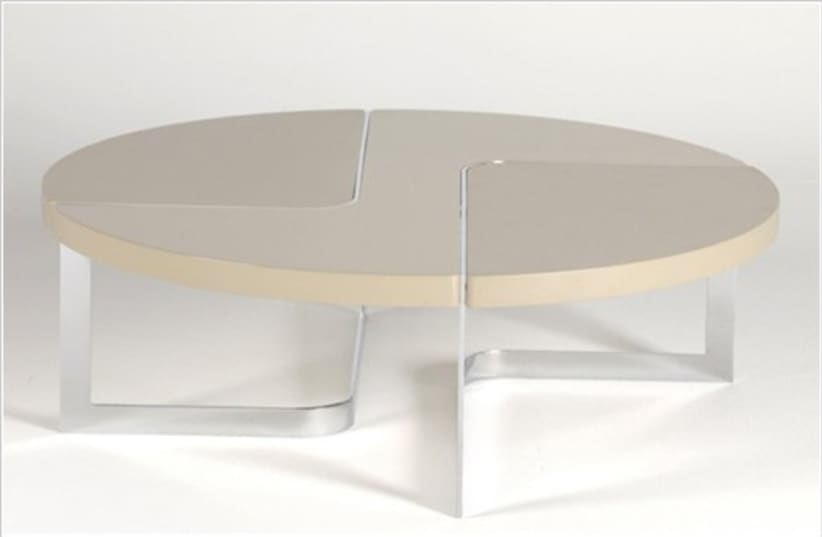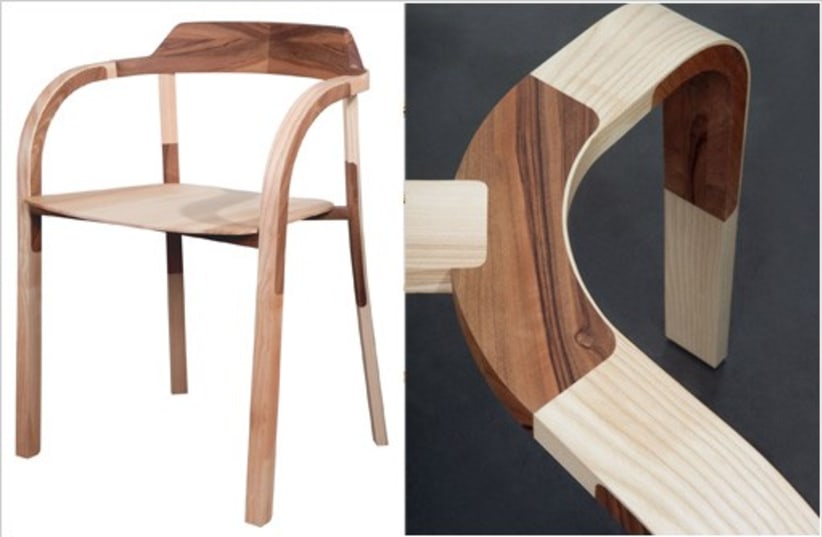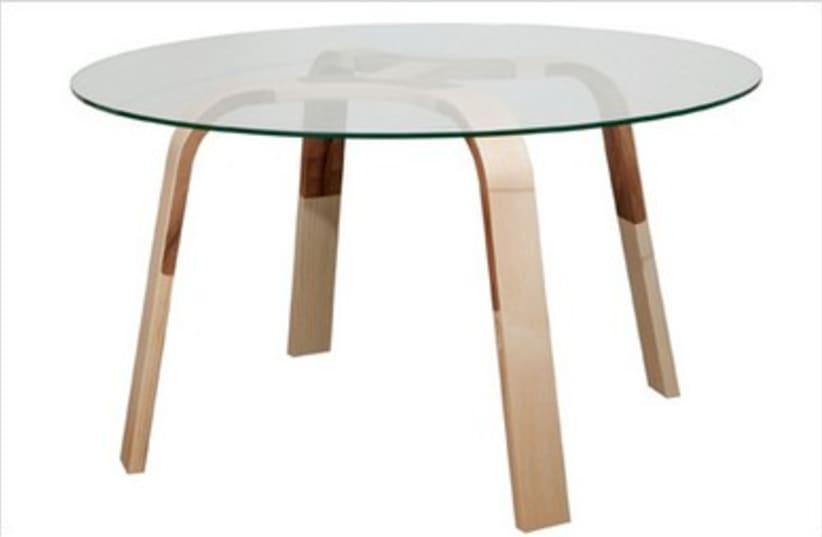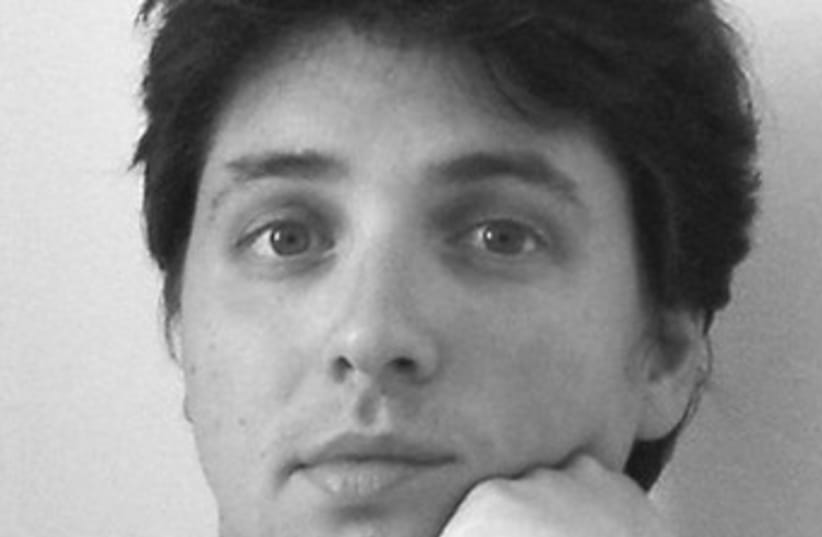



This ambitious decision plus his mad talent led him to work with some well known brands in the international scene such as Ligne Roset, Roche Bobois and Metalarte to name a few.A fearless character, Itamar tackles most challenges head on and will stop at nothing to create well-designed products. From furniture to light fixtures and home accessories, Itamar knows how to mix it all. His collection of objects is a wide range of rough and slick beauties. Can you explain a little bit about your background?Born and raised in Haifa, a fairly normal childhood, a fairly normal family.I had no real background in art or design, but always had the feeling I would one day want to do something artistic. I didn't even know the profession “industrial designer” existed, and would never have guessed that's what I would do in my life.During my graduate studies I moved to Eindhoven as an exchange student. “Droog” design was all the rage at that time and it all started at the Eindhoven Design Academy, so going there seemed like a good idea to me. It was an interesting, but not very influential period in my life.After I graduated I was looking for a platform that could help me enter the furniture and lighting design world. Since I speak French (my mother is French) and have family there plus a French passport, Paris became my base. The French design scene was very active at the time, and I came across VIA -a nonprofit French organization that helps promote young designers. Up until today I have completed five projects with VIA and am already working with a few of the major furniture French companies, so I can defiantly say Paris was always good to me.When did you first decide that you wanted to become a designer? “At the last minute,” I guess you can say. I was thinking about studying film making, graphic design or architecture. I first encountered industrial design as a profession just when I was about to sign up to the Bezalel Academy. Fortunately I lost my way around campus and found my self in a presentation at the industrial design department; it was love in first sight. I took a pen and changed my registration forms on site. Where do you live, what do you like about it and how does it affect your creations?I live between Tel Aviv and Paris. Israel is my home base, and my family lives here but as most of my work is done abroad I have to spend a part of my time in France. I love those constant changes in my environment, they help me stay sharp.Give us a glimpse into a normal day in your life. It's not a normal nine to five kind of job; I don't really have a typical day.Can you briefly describe your process for creating a new design?I wish I could! It would help me a lot.Every project is unique and requires a different process. For example, on one hand, the bookshelf “Unit” is a project that was conceived in about a month maybe less and on the other had the “Flex family” took me about four years of development. What are you most proud of professionally? And what has been your favorite project so far?I am proud and happy of all the projects I do with the companies I work with. It was my goal to design furniture and lighting for international known brands, and I'm doing just that.My favorite project so far was probably the “Flex family” project, just because it was such a long journey. Seeing it come to life after so such a long time was really special for me. What are you really good at? What are you really bad at?Like so many other designers I am good at designing and not so good at making money out of designing.What do you do to stay inspired and motivated to create?I try as much as I can to keep updated with the latest in the design world online and by visiting the galleries and companies in Paris.I try to stay attentive all the time. Many times new projects or solutions to existing ones come from things I see that have nothing to do directly with my work. Is there anything in particular that fuels your creativity as a designer?No, every thing goes. I can be inspired by almost everything. Art, architecture, cinema. The list is endless. Which place in the world most inspires you and why?For me it has always been Paris. It just has a certain quality. What are some other passions you have besides art and design?Rock climbing, books, cinema and food.What challenges have you overcome as a designer?Almost every day poses a new challenge, so in a way overcoming them is part of my daily work.But if I have to name one, working with companies that have a different cultural background and language is probably the biggest constant challenge I have. Could you describe your progression as a designer, compared to when you first started out? How have you changed since then?I think that as a designer I am on a long time journey of refinement. At the end of the day it’s a question of practice. You have to do it for long enough to get better at it, to better understand the complexity of the profession, to better execute an idea you have. I think that as I practice almost every day, I keep doing better than I did before, and I hope to do it better in the future.Do you ever hit a creative block – if so, how do you get out of it?I haven’t had one so far, and hope to never have one in the future. I don't see myself as an artist, but more as a craftsman so creative block is not really in my vocabulary. What advice do you have for young designers who want to follow your path?I think that design is a very individual profession, and so each one has to discover his own path.What has been one of your biggest lessons learned since starting out?That knowing to design is just a part of what you need to know as a designer.What has contributed the most towards what you have achieved?I think that a naive belief that “I can make it.” I don't know if I would have started it all again if I knew then what I know now. At the age of 20, what did you think you were going to do “in life” – where do you see yourself in the future? Has your dream come true already?As I said previously, at the age of 20 I wanted to be a film maker.In the future I would like to do more of what I am doing today, and yes I am living my dream. Einat Kayless Argaman founded DesignBreak in 2009 and since then has gained a large community of daily readers celebrating the design scene in Israel and beyond. Read Einat’s blog and follow her designed journey at http://www.designbreakonline.com/Follow @JPost_Lifestyle
